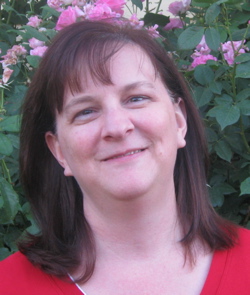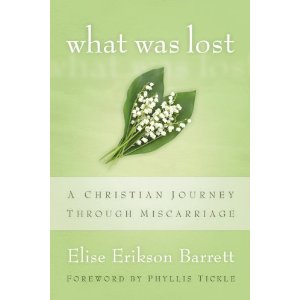Last month I posted what proved to be a controversial opinion piece about five reasons I feel that Mormon sacrament meetings are not spiritually engaging. Thank you to everyone who read the piece and took the time to offer feedback. Also, my thanks go to Glenn Ostlund and Bridget Jeffries for inviting me to discuss my views on each point in more depth on the July 28 Mormon Expression podcast.
One blog reader, Lisa Tait, contacted me privately and said she had some thoughts on the subject, so I invited her to write a guest post. She’s interested in exploring in greater depth what “worship” might mean in an LDS context, and she makes her points very well, disagreeing without being accusatory or personal.
I appreciate many of her points, but I don’t necessarily agree with the overall definition of worship here. My advocacy in the original post was never for improved “performance” but for a more worshipful sacrament meeting that focuses on God. There’s a whole lot of joy mentioned in conjunction with worship in the Bible, as becomes apparent in Psalms 92, 95, and 149. I simply don’t see that joy in many of our sacrament meetings, at least on a corporate level, which is not to diminish what an individual may be experiencing as he or she sits quietly in the pews.
In the end, worship is described in the Bible as being about what God wants, beyond what will help us to grow spiritually. Worship is not a self-improvement exercise so that people can become better speakers, or develop the virtue of patience, or even acquire more knowledge about what we believe. (It’s also certainly not about entertaining ourselves, which I worry some readers took away from the original post.) Worship is about God. How do we live that principle?
Let the discussion begin! –Jana

Reexamining Mormon Worship
By Lisa Tait
In her blog post on the shortcomings of Mormon meetings, Jana Riess argues that “we simply must change” the pattern of tedious, “stultifying” meetings that bore us to death and drive away new converts. Today’s sacrament meetings–“an exercise in routinized tedium”–are “decidedly different” than worship practices in the early years of Mormonism, and leaders need to make improving the level of worship a higher priority. Ultimately, I am going to agree on the last point, but I want to examine the concept of worship that I think ought to underlie those efforts.
The concept of “worship” is not articulated very self-consciously in Mormondom, but that doesn’t mean we don’t have one. In LDS scriptures, there is little mention of church meetings other than the injunction to partake of the sacrament. The most detailed description we have is from Moroni 6:5-6: “And the church did meet together oft, to fast and to pray, and to speak one with another concerning the welfare of their souls. And they did meet together oft to partake of bread and wine, in remembrance of the Lord Jesus.” The point of these meetings, as verse 4 expresses it, is to see that the members of the church are “remembered and nourished by the good word of God, to keep them in the right way, to keep them continually watchful unto prayer, relying alone upon the merits of Christ….” To me, this is a recognizable description of the pattern that modern LDS meetings follow.
In this view, the Mormon theory of worship is an active, participatory, process-oriented concept. “Worship,” in the sense of experiencing feelings of awe, praise, and gratitude, is an individual experience and responsibility. By this definition, the ten minutes or so during which the sacrament is administered is the “worshipful” part of the meeting in the strictest sense. During the rest of the meetings, we worship by doing. It is a concept that accepts a lot of imperfection. The person giving that stultifying talk may be a fragile new member or someone who can’t read well, but the process of giving those talks and lessons is part of the unfolding process of sanctification that we understand to be at the core of the gospel. We are active participants in that process, both by putting forth our own efforts and by supporting others as they put forth theirs.
Moroni 4:6 gives what I think is the key word for our church meetings–“nourish.” We meet to nourish and be nourished. Moroni describes the key elements of this process: fasting, prayer, speaking together, receiving “the good word of God.” Speaking for myself, I go to church each week for two primary reasons: to take the sacrament and to serve. The sacrament, to me, is the most direct spiritual nourishment I receive all week. I spend the (relatively) quiet time praying, meditating, and drawing out my soul. At their best, these moments give me experiences with the Spirit that are much more than “warm, fuzzy, and nonthreatening.” And then throughout the rest of the meetings, I try to serve my fellow Saints by speaking with them, listening to them, offering words of encouragement, participating in class discussions, and simply smiling or offering a friendly greeting.
We need to be careful about assuming that worship services in the early days of the church were better than they are now. The charismatic gifts of the spirit that some feel are lacking were often a source of chaos and confusion. Meetings consisted largely of interminable sermons in which men (always men) spoke for hours, largely to other men. Women and children often did not attend. The members were largely passive. The structure and expectations of church meetings in the early days were definitely different–but not in ways that we would all agree were superior. Over time we have learned, with Elijah, that the voice of God is heard most reliably in the “still, small voice.” I don’t agree that Mormons go to sacrament meeting without expecting God to show up. The simple but powerful nourishment we receive from the sacrament and, yes, even from some of the talks and lessons, is real.
I agree that we could raise the standards of performance in our meetings, and we do need vision and leadership to “raise the bar.” As much as Mormons are mediocre at speaking in church, they are equally accomplished at obedience. Specific, pointed emphasis from the top could effect real change.
But frustrations aside, I find the participatory, process-oriented model of worship we practice as Latter-day Saints to be one of the strongest evidences of the truthfulness of the gospel. It is empowering and validating to individuals, regardless of their abilities or talents. It helps to forge us into a community of believers who focus our efforts on remembering the Lord and strengthening each other. There are times when the level of nourishment in our meetings falls short of what I would like, but those times are just as likely to be a result of my own attitude or choices as of anyone else’s failure to meet an objective standard of adequacy.
Lisa Olsen Tait recently completed a PhD in English at the University of Houston, with a dissertation on Susa Young Gates, the Young Woman’s Journal, and transitional Mormonism in the 1890s. Her research focuses on late-nineteenth and early-twentieth century literature and culture, with a special interest in women writers, popular fiction, and Mormon magazines.

